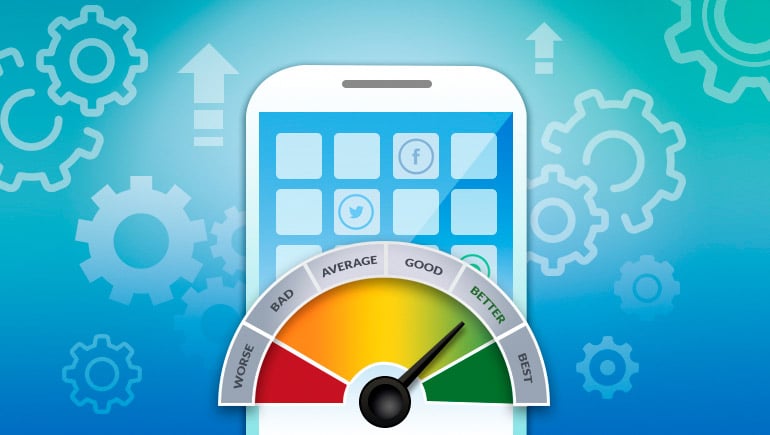How to Make Mobile Applications Performance Optimization
READ WHOLE ARTICLE

Today almost no one would tolerate the bulky and inconvenient mobile phone applications. People expect to be able to enjoy all the benefits of the smartphone technologies with the speed of light. According to a joint study by Google and Ipsos, conducted in August 2015, if your website or mobile app is inconvenient or too slow, 29% of smartphone users immediately switch to competitor solutions. The reason being the unmet needs of potential customers: 70% will do so because of the low load speed, and 67% – if making a purchase or information search requires too many intermediate steps.
Mobile App Performance Testing
The main method of measuring app performance even at the development stage is the performance testing. It is extremely important to determine whether the requirements of modern mobile users are met by the software application even before the product is released to market, as otherwise, the cost of the program completion may exceed the cost of testing. Many companies ignore this process altogether, referring to the cost overrun. However, it is rather rash and may adversely affect the business as a whole. Performance testing is a system of different types of tests, the purpose of which is the performance management and assessment of the measure of stability, resource consumption, security and other attributes of the application quality in a variety of usage scenarios and workloads. Performance testing allows looking for potential vulnerabilities and weaknesses in order to prevent the result of their harmful impact on the work of the program. |  |
What Types of Tests are Incorporated into the Performance Testing?
Depending on the characteristics that we want to test, performance tests are divided into the following types:
 |
|
How to Improve Mobile Application Speed
There are a number of ways how to optimize application performance and make it run faster. We will share the most fundamental ones.
- Qualitative UX-design. Do not skimp on hiring a UX-designer and improving their skills. A good professional will not only create great application UX-designs but also advise on ways of application performance optimization.
- Profiler usage. Performance profiler is a program or service that executes the mobile app performance monitoring and helps to quickly establish its “bottlenecks”.There are universal, platform oriented, language oriented and framework oriented instruments.
- Careful design of application architecture by professional software development firm. To increase the speed of development and improve the mobile app performance it is worth adhering to the classic three-leveled structure of the application: data – business logic – representation. Each component’s code should be responsible only for its part of processing and interact with other components through interfaces.
- Caching. Mobile devices do not always have a stable Internet connection to access the cloud storage, so often there is a need for offline data caching. In addition, caching is used to speed the application. For example, if the same data is displayed on different screens or commonly used in the screen content layout. Same principles may be applied to native, non-native or cross platform apps. A sub-type of caching – swapping can be used to reduce the memory usage.
- Custom adaptation. In addition to the automatic computational adaptation implemented internally by the system, developers can adopt custom adaptation strategies that utilize the business logic of mobile applications. A typical customized adaptation entails the usage of such means, as CPU cores load balancing, data compression, reasonable simplification in network information exchange, most appropriate server selection algorithms, and other performance tuning solutions. At the same time, such adaptation must be selective at the level of applications or users.

Difference Between Testing of Mobile And Web Applications
Summary
In our practice, we faced a couple cases where the properly carried out optimization significantly improved the application performance and decreased load time by seconds. Thus it goes without saying that application performance testing and optimization is one of the essential parts of development process.

36 Kings Road
CM1 4HP Chelmsford
England


